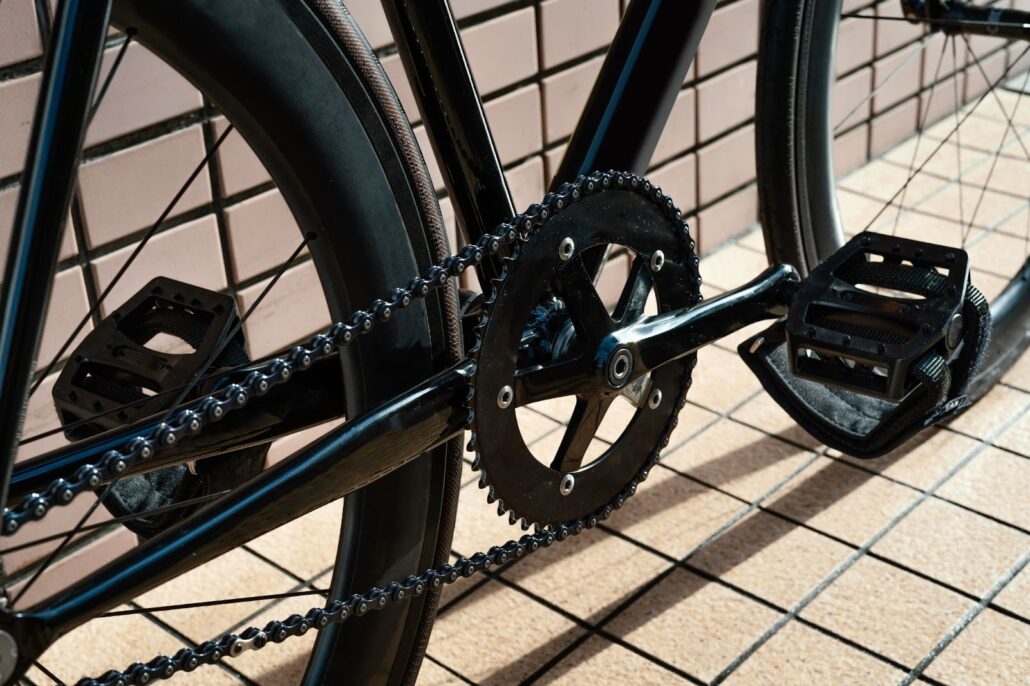Dreaming of conquering those rugged mountain trails on your trusty bike? If that’s the case, equipping your bicycle with a substantial cassette like the 11-36, 11-40, or 11-42 is the key to unlocking the ultimate adventure.
Yet, amidst the excitement of this impending thrill, the decision-making process surrounding the optimal cassette selection can quickly become a puzzling endeavor.
So, in the grand debate of 11-36 versus 11-40 versus 11-42 cassettes, which option holds the upper hand?
When it comes to the 11-36 cassette, it offers a peak velocity of 18-35.7 mph across a range of different pedaling rhythms. On its heels is the 11-40 variant, delivering a speed range of 17-34.1 mph. Bringing up the rear, the 11-42 cassette boasts a top speed of 14-32.1 mph. However, it’s worth noting that the 11-42 stands out with its colossal 42-tooth cog, dwarfing the 36-tooth cog of the 11-36 cassette. Conversely, the 11-40 configuration showcases an impressive 40-tooth cog, exceeding that of its 11-36 counterpart.
Nonetheless, these numerical considerations are merely a fraction of the puzzle when evaluating each cassette. Unveiling the most harmonious fit for your individual riding style demands a deeper exploration.
With this understanding as our foundation, let’s plunge headfirst into the intricate tapestry of cassette possibilities.
Unveiling the Optimal Cassette: A Comprehensive Examination
Perhaps you’re pondering about the optimal cassette choice for diverse terrains. Instinctively, the 11-42 option might strike you as most favorable. However, such assumptions could be deceptive.
Now, the quandary emerges: is it the 36t, the 40t, or the 42t cassette that claims supremacy? Addressing this query demands a comprehensive evaluation of myriad considerations. Parameters such as gear ratios, the span of gear options, maximum velocity, chain connections, and more, necessitate meticulous analysis. This scrutiny extends to the juxtaposition of 46t and 50t cassettes as well.
Hence, let us embark on a swift yet thorough review, aimed at dissecting pivotal components.
| Differentiating Factors | 11-36 Cassette | 11-40 Cassette | 11-42 Cassette |
|---|---|---|---|
| Smoothness | Most | Less than 11-36 Cassette | Least |
| Ease of Climbing | Less than 11-40 Cassette | Less than 11-42 Cassette | Most |
| Force Required | Least | More than 11-36 Cassette | Most |
| Gear Range | 11-12-13-15-17-19-22-25-28-32-36 | 11-13-15-17-19-21-24-27-31-35-40 | 11-13-15-17-19-21-24-28-32-37-42 |
| Gear Ratio (Highest) | 3.64 | 3.64 | 3.64 |
| Gear Ratio (Lowest) | 0.31 | 0.28 | 0.26 |
| Top Speed (Highest Gear) | 18-35.7 mph | 17-34.1 mph | 16-32.1 mph |
| Top Speed (Lowest Gear) | 1.304 mph- 2.178 mph | 1.304 mph- 2.178 mph | 1.304 mph- 2.178 mph |
| Number of Teeth (Maximum) | 36 | 40 | 42 |
| Shift Time | Least | More than 11-36 Cassette | More than 11-40 Cassette |
| Chain Length (For 50/34 front cog) | 137 cm | 140 cm | 142 cm |
| Chain Link (For 50/34 front cog) | 107 Links | 109 Links | 111 Links |
This swift overview divulges a plethora of insights, yet delving into each individual aspect is imperative. Failing this, the task of selecting the appropriate cassette tailored to a specific terrain might indeed pose a formidable challenge.
Nevertheless, there’s no need for undue concern, for the subsequent segment promises a thorough juxtaposition of these three cassettes.
With that said, let us forge ahead.
In-Depth Comparative Analysis
When it comes to evaluating bicycle components thoroughly, a reliance on quantifiable metrics is paramount. These numbers transcend the variable of speed, offering a clear gauge of a bicycle’s adaptability. Safety, another integral factor in this equation, takes center stage as well.
The realm of bicycle modification spans a vast spectrum, encompassing a plethora of possibilities. Consider the scenario where you’re seeking a compatible 8-speed chain for a 9-speed cassette. In the context of upgrading to a larger cassette, a comprehensive understanding becomes imperative to ensure a seamless transition.
For the purpose of this comprehensive analysis, our focus converges on 11-speed cassettes across various sizes. This deliberate selection serves to provide a robust basis for measurement and evaluation. Thus, without any further delay, let’s embark on this journey of comparison.
Exploring Gearing Range
So, what exactly constitutes the notion of gearing range? At its core, the gearing range denotes the disparity between the lowest and highest gears available. It’s a reflection of the effort required to pedal effectively. Additionally, a higher gear in the rear translates to heightened torque output.
With this in mind, let’s delve into the specifics of the 11-speed 11-36 cassette. The sequence of gears it offers is as follows: 11-12-13-15-17-19-22-25-28-32-36. This setup includes a maximum gear of 36, which could prove to be slightly demanding when tackling uphill terrains. However, it boasts a near-optimal gear ratio that holds promising prospects, a point I’ll be addressing shortly.
In contrast, the 11-speed 11-40 cassette paints a different picture. Its gear sequence is structured as follows: 11-13-15-17-19-21-24-27-31-35-40. In comparison to the 11-36 cassettes, this configuration offers a more forgiving experience while navigating uphill landscapes.
Shifting our attention, the 11-speed 11-42 cassette ushers in yet another layer of diversity. Its gear distribution unfolds as follows: 11-13-15-17-19-21-24-28-32-37-42. Notably, the gear range differential here is broader when juxtaposed with the 11-36 and 11-40 alternatives.
In a nutshell, to sum up the findings of this analysis:
- The 11-42 cassettes grant you the luxury of maneuvering your cycle effortlessly, bolstered by increased torque;
- Following this, the 11-40 cassette provides a balanced compromise between ease of use and gear variability;
- Lastly, the 11-36 cassette places a higher demand on your exertion, particularly in hilly scenarios. However, its meticulous gear ratio design bears its own merit.
Unveiling the Significance of Gear Ratios
The importance of gear ratios cannot be understated; they unveil the intricate dance between your wheels and the cadence, indicating how revolutions unfold per 100 pedaling cycles. This vital metric wields considerable influence, orchestrating the pace across a spectrum of gears, and subsequently dictating the rider’s experience of speed and effort.
When it comes to the triumvirate of cassettes and their respective gear ratios, an interesting consistency arises. The paramount gear ratio among the three cassettes stands at an identical value of 3.64, a numerical harmony sustained by employing the same front derailleur across the spectrum.
Yet, the true divergence comes to the fore when examining the lower echelons of gearing. For this analytical endeavor, the Bicycle Gears Calculator emerges as an invaluable ally, enabling enthusiasts to unravel the complexities of gear ratios while considering an array of factors.
Peering into the depths of the lowest gear configurations, a captivating revelation awaits. In the realm of the 11-36 cassette, the gear ratio unfurls to a modest 0.31, indicative of a certain equilibrium between power and rotation. In contrast, the 11-40 cassette extends its reach with a ratio of 0.28, affording riders a marginally amplified mechanical advantage. Yet, the zenith of this narrative arrives with the 11-42 cassette, boasting a gear ratio of 0.26, underlining its predisposition for torque-driven endeavors.
While these numbers might at first glance seem trivial, they spin a tale of two contrasting attributes. Delving deeper, the saga reveals that the 11-36 cassette bestows upon its wielder the capability to attain swifter top speeds. This is accomplished by optimizing the 100 RPM cadence for the 11-42 cassette, channeling a surge of forceful torque.
- The 11-36 cassette triumphs as the bearer of the highest gear ratio at the lowest tier, striking a harmonious balance;
- Following suit, the 11-40 and 11-42 cassettes step onto the stage, asserting their unique gear ratios in descending order.
Navigating the Terrain of Velocity
The velocity realm of cycling finds itself beholden to the dual influences of the front and rear derailleurs. As these mechanical symphonies orchestrate the interplay between rider and machine, the pedal-powered saga takes on various hues, delineated by differences in speed.
At the summit of the gearing hierarchy, the 11-36 configuration unfurls its wings, ushering in speeds ranging from a spirited 18 to a riveting 35.7 miles per hour. This dynamic spectrum hinges on the rhythmic cadence you maintain, underscoring the interdependence of revolutions and momentum. Remarkably, the apex of velocity is attained as the chain’s tensile might is harnessed to its fullest. However, this pursuit exacts its toll, demanding a more robust effort from the rider’s limbs.
In contrast, the 11-40 cassette sashays onto the scene, showcasing speeds that oscillate between 17 and 34.1 miles per hour. Here, the tonal quality shifts, with chain tension taking a slight backseat, granting riders a more forgiving pedaling experience. This concession to effort stems from the 11-40’s augmented highest gear, a larger diameter that evokes a gentler rhythmic cadence.
Meanwhile, the 11-42 cassettes beckon with a different narrative, wherein their upper velocity boundaries taper to a range of 16 to 32.1 miles per hour. This deceleration, however, is counterbalanced by a notably diminished chain tension, allowing for smoother pedaling motions. Regrettably, this newfound ease comes at a cost—the pace of progress itself.
In Conclusion:
- The 11-36 cassette commands the throne of swiftness, reigning supreme in the realm of velocity;
- Following in tandem, the 11-40 and 11-42 cassettes stake their claims, bowing in descending order of top speeds.
Time Shifting Explained
The art of time shifting in cycling revolves around several critical factors, with the tension of the shifter cable taking the lead. Precise gear shifting technique further comes into play, intricately intertwined with the spatial arrangement and the tooth count of the cogs.
Tooth Count and Efficiency:
When it comes to cassette tooth counts, different configurations yield varying shifting efficiencies. Here’s a breakdown of the numbers:
- 11-36 Cassettes: These possess a maximum of 36 teeth. The reduced tooth count enhances their efficiency in gear shifting, allowing smoother transitions between gears. The proximity of the cogs, spaced closely together, contributes to this efficiency;
- 11-40 Cassettes: With a higher tooth count of 40, these cassettes do offer versatility in gear ratios, but the shifting time can be slightly longer compared to the 11-36 counterparts. This means that while still efficient, the transition might not be as seamless;
- 11-42 Cassettes: The most teeth-rich of the trio, these cassettes max out at 42 teeth. This, however, translates to a longer shifting time due to the increased gap between cogs. Consequently, despite their versatility, they might not provide the same efficiency as the 11-36 cassettes.
Modern Technology and Personalization:
Leading manufacturers of cycling components have harnessed modern technology to optimize gear shifting efficiency. Leveraging advanced materials, precise engineering, and meticulous design, these manufacturers offer components that streamline gear transitions, ensuring a smoother and more reliable cycling experience.
Moreover, for those who demand a personalized touch, the flexibility to adjust cable tension according to individual preferences is a boon. Tinkering with cable tension can significantly influence shifting time, allowing riders to fine-tune their gear changes to suit their riding style and terrain.
Chain Links and Length: Determining Chain Compatibility
The pivotal factor in ensuring seamless gear transitions and preventing unforeseen incidents while cycling lies in the length of the bicycle chain. A critical consideration revolves around the quantity of chain links and its compatibility with the arrangement of the cassette:
Matching Chain Link Quantity with Cassette Configuration:
For 11-36 cassettes: Achieving perfect harmony with an 11-36 cassette involves employing a chain containing 107 links. This particular chain length seamlessly aligns with the gear ratios inherent in this cassette setup, ultimately enhancing the performance of gear shifts. To complement an 11-36 cassette, a recommended chain length of approximately 137 cm should be used.
- In the case of 11-40 cassettes: When dealing with the slightly larger dimensions of the 10-speed 11-40 cassettes, a chain comprised of 109 links becomes essential. This selection guarantees a smooth and coherent interaction between the chain and the teeth of the cassette. Accompanying the 11-40 cassettes, it is advised to maintain a chain length of around 140 cm;
- Regarding 11-42 cassettes: The requisites for chain link count surge to 111 when dealing with 10-speed 11-42 cassettes. Given that these cassettes boast the highest count of teeth, a chain with a slightly extended length is imperative to effectively accommodate the diverse range of gear ratios. The optimal chain length for 11-42 cassettes hovers at approximately 142 cm.
Synthesis: Interlinking Chains and Cassette Arrangements
In essence, the intricate dance between the number of chain links and the arrangement of cassette teeth plays a pivotal role in steering the performance of gear shifts. Let’s recap the fundamental takeaways:
- For 11-36 cassettes: Smooth gear transitions achieved through 107 chain links, complemented by a chain length spanning 137 cm;
- In the scenario of 11-40 cassettes: Slightly elongated gear transition times, attributed to the presence of 109 chain links, accompanied by a chain spanning 140 cm;
- In the realm of 11-42 cassettes: The most extended gear transition times, propelled by the use of 111 chain links, alongside a chain measuring 142 cm in length.
Diverse Terrain Performance Unveiled
Exploring various landscapes, the utilization of expansive cassette sets unveils a fascinating array of capabilities, particularly evident when navigating uphill inclines. Equally captivating is the performance exhibited on both asphalt highways and rugged gravel paths. Let us delve into the distinctive prowess showcased by each cassette within this context.
In the realm of on-road and gravel terrains, the 11-36 cassette stands as a remarkable phenomenon. It bestows upon riders the potential to attain exhilarating top speeds while engaging the pinnacle gear. This feat, however, demands a heightened exertion of pedaling force.
Meanwhile, when confronted with undulating landscapes, the 11-36 cassette bestows the rider with ample torque, facilitating ascension up formidable mountains. The integration of lower gear ratios empowers the cyclist to achieve a conventional equilibrium, thus enhancing the efficiency of traversing slopes.

Conversely, the utilization of the 11-40 cassette on both road and gravel surfaces might verge on monotony. The uppermost gear does indeed unlock the gateway to impressive speeds, yet the endeavor necessitates a more rigorous pedaling endeavor. Nevertheless, the scenario takes a favorable turn when tackling hilly terrains, as the 11-40 cassette demonstrates a performance superiority over its 11-36 counterpart. This elevation in performance can be attributed to the 11-40 cassette’s augmented capacity for generating greater torque.
Within the realm of any topography, the 11-40 cassette retains its status as a dependable choice. An illustrative example of this reliability is depicted by a young rider, who adeptly maneuvers an 8-speed 11-40 setup with remarkable finesse.
Meanwhile, the 11-42 cassette emerges as a standout choice for conquering hilly landscapes. It equips riders with an optimal blend of torque, equilibrium, and the appropriate degree of velocity. Nonetheless, when confronted with on-road and gravel surfaces, the 11-42 cassette inevitably relinquishes some of its prowess, failing to rival the capabilities of the 11-36 counterpart.
In summary, the narrative of cassette performance unfolds with a resounding conclusion: the 11-36 variant emerges as a versatile option, catering adeptly to a wide spectrum of terrains. In contrast, the 11-40 and 11-42 configurations shine most brilliantly when confronting the challenges of hilly landscapes, offering an unparalleled amalgamation of torque and balance.
Masterful Bicycle Maintenance
Sustaining the optimal performance of your cycling experience is undeniably anchored in the realm of maintenance. Careful and consistent maintenance of your cassettes constitutes a straightforward task. However, it’s imperative to acknowledge the nuances that distinguish each cassette’s maintenance requirements.
In the realm of cassette upkeep, let’s delve into the intricacies of the shifter cable. Achieving the right balance between tautness and laxity in the shifter cable is paramount. Ensuring the seamless transition between gears hinges on precisely adjusting the shifter cable to eliminate any disconcerting noises during gear shifts.
When it comes to the 11-42 cassette configuration, the shifter cable’s tension should exhibit a subtle difference compared to the 11-36 setup. Furthermore, it’s noteworthy that prolonged riding can occasionally lead to the gradual loosening of the shifter cable. Hence, maintaining an optimal shifting experience necessitates periodic recalibrations of the shifter cable tension.
To execute this task with finesse, initiate the process by positioning the gear lever at its lowest setting. The next step involves gently manipulating the gear lever to attain the desired cable tension. In the context of the 11-36 cassette, a clockwise rotation of the shifter cable by approximately five turns is recommended. However, for the 11-40 and 11-42 cassettes, a more nuanced approach to cable tension is required, wherein excessive tightness is to be avoided.
Shifting our focus to the bicycle’s chain tension, it’s pivotal to maintain a chain tension that hovers around the 12-13 mm range. Yet, this tension can be compromised if diligent lubrication practices are not adhered to. Notably, the 11-36 cassette format is susceptible to chain slackness more frequently than its counterparts.
In the case of the 11-40 and 11-42 cassettes, the need for extended chains mitigates the likelihood of chain slack issues. However, irrespective of the cassette variant, a diligent regimen of chain cleaning and lubrication remains non-negotiable.
Here’s a practical rundown of premier products to facilitate your bicycle’s optimal health:
Introducing the Finish Line Bicycle Chain Cleaner and Lubricant: Opting for this remarkable product stands as a wise decision when aiming to uphold a bicycle chain that’s both impeccably lubricated and devoid of grime. With a wallet-friendly price tag of under $10, it emerges as an easily attainable remedy.
Enter the Muc Off Bio Drivetrain Cleaner: Tackling the more substantial cassettes demands a proficient removal of accumulated dirt and grease. In this domain, the Muc Off Bio Drivetrain Cleaner takes the lead, ensuring a comprehensive purification procedure.
Behold the Finish Line Bicycle Disc Brake Cleaner: Without a doubt, maintaining optimal brake performance is an absolute safety requisite. This specific product adeptly tends to brake cleanliness, effectively preempting potential mishaps. Its application fosters the smooth operation of your bicycle’s braking mechanism.
Now, direct your attention to the Finish Line Showroom Polish and Protectant: Often underestimated yet equally pivotal is the enhancement of your bicycle’s visual allure. The Finish Line Showroom Polish and Protectant vows to confer a spotless, akin-to-new facade upon your cherished bicycle.
Unveiling Value and Performance
Discussing the aspect of cost, let’s delve into the realm of pricing. It’s imperative to emphasize that anything you invest in should undeniably offer exceptional value for your hard-earned money.
Turning our attention to the financial aspect of acquiring a dependable 11-36 cassette, the spectrum ranges from $50 to $105. While there are more economical alternatives accessible, it’s crucial to note that opting for these might subject the infrequent derailleur of your bicycle to a consistent degree of pressure. Hence, the wise course of action would be to gravitate towards options that are renowned for their reliability.
In contrast, if you’re inclined towards a reliable 11-40 cassette, it’s worth noting that this choice might necessitate a slightly higher financial commitment compared to the 11-36 variant. From personal experience, I’ve found the 11-40 cassette to be ideal and well-suited for a seamless cycling setup.
In the realm of front cranksets, the Shimano 105 11-speed emerges as a commendable selection, mainly due to its impeccable balance between acceleration and speed.
Shifting our focus to the rear cassette, my personal preference aligns with the Shimano XT Cassette. The shifts are characterized by their velvety-smooth precision and a notably subdued operational sound.
Concluding our discourse on components, we come to the Shimano Deore XT M800 shifter, which undoubtedly serves as the crowning glory of the ensemble.
While the liberty to mix and match components to suit your preferences is at your disposal, it’s of paramount importance to diligently consult the compatibility guide before embarking on such endeavors.
Lastly, setting our sights on the financial facet once more, the cost of 11-42 cassettes varies between $65 and $200.
To encapsulate the essence succinctly: the most budget-friendly choice rests with the 11-36 cassette.
Selecting the Right Cassette: Making an Informed Choice
Having delved into the exhaustive comparison, you’re now left with a critical decision: is the transition from an 11-36 cassette to an 11-42 cassette a justifiable move?
In truth, there’s little necessity to undertake the conversion from 11-36 to 11-42. However, if your cycling endeavors involve grappling with uphill challenges, then the 11-42 cassette presents itself as an attractive option. On the flip side, the 11-36 cassette remains a versatile choice, adeptly performing on a wide spectrum of terrains. This versatility, you see, is attributed to the optimally calibrated gear ratios.
The robust design of the 11-36 cassette empowers it to conquer even the most unforgiving landscapes without faltering. What’s more, its maximum speed surpasses that of both the 11-40 and 11-42 alternatives.
Yet, one must not dismiss the allure of the 11-40 cassette, particularly if your cycling aspirations lean towards a more leisurely and relaxed experience. The interplay between torque, speed, and compatibility in the 11-40 option makes it a compelling contender.
In the end, the decision should be guided by your individual inclinations and inclinations. Your preference, after all, ought to take center stage in this deliberation.
Conclusion
All insights pertaining to the comparison between the 11-36, 11-40, and 11-42 cassettes have been duly conveyed.
Allow me to impart a valuable suggestion: a lower cadence can prove remarkably efficacious when ascending a formidable mountain. This approach inherently facilitates the harmonious equilibrium of your physique through the judicious displacement of air.
Wishing you a splendid day ahead.






